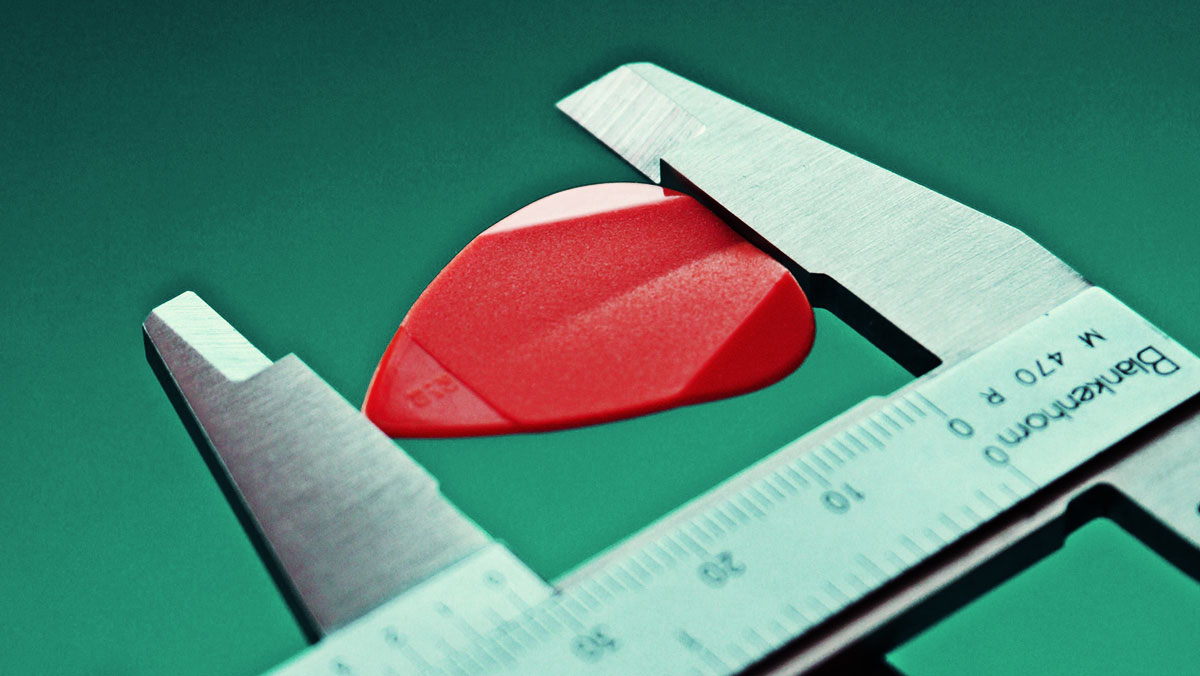
According to the US Census Bureau, the highest five-year survival rate for any new business is just 51%. And 14% of start-ups fail because they don’t consider their customer’s needs. Shocking, right? How can the businesses doomed to fail turn their luck around and scale growth instead? There are many answers to this question but in this article, we are going to focus solely on brand building.
A strong brand is an extremely important asset in acquiring customers and building credibility as it uses the power of emotion to influence a positive reaction to your product/service. However, to be able to evoke such emotion, a company needs to first be in tune with what their target audience wants and needs. That’s where brand tracking comes in.
A brand tracker can provide precise, reliable data that a brand needs to make the marketing decisions that will tap into the consumer’s psyche and accelerate growth. That means determining if a brand campaign is having the right impact, how the competition is performing, and if there are any hidden audiences that can be targeted in the future.
Babbel, an online learning company based in Berlin, had their brand performance in the US monitored over a number of months using a brand tracker. This article will present the results and showcase the insights Babbel can glean from the data provided by the tracker to further scale their business.
Why use brand tracking?
Trillions of dollars are spent every year on marketing campaigns by brands. However, because many of them don’t have an analytics tool that can measure the true impact a brand campaign is having on their target audience, they never really know if this is money well spent or not.
There are some options on the market that can help a brand find data upon which to base future campaigns. Social listening is a popular one, but it doesn’t provide the reliable insights a company like Babbel needs to grow.
Social listening operates under the 90-9-1 rule. That means that brands are not exactly hearing from those who matter the most to them, their target audience. That’s because 90% of online communities simply lurk and observe. Then there is another 9% of people that might comment from time to time. The insights that social listening gathers? That comes from just 1% of the total online users. Brand tracking, on the other hand, can break down data into specific audiences.
Let’s look at what brand tracking could do for Babbel as they continue their growth journey.
How to use brand tracking to scale your business
Determine competition in key audiences
Online learning may seem like a recent concept (it has certainly accelerated recently), but it is by no means a new idea. Although it is today’s students who are more open to learning online, one of the biggest online learning companies in the world is Rosetta Stone, founded in 1992.
Younger audiences (think Millennials and Gen Z) are becoming more tuned into online learning and these consumers are always looking for something new and innovative. Therefore, it may be the opinion of some that these audiences would be more inclined to choose a more modern tool like Babbel than the legacy brand Rosetta Stone. If the online learning brands themselves were to work based on this presumption rather than hard fact, the results would be detrimental.
Legacy brands are as aware of the need to move with the times than any new brand. Rosetta Stone jumped on the social media bandwagon and tapped into YouTube to reach Millennials and Gen X. As of May 2020, they have a brand awareness level of 32% amongst 18-25-year-olds and 49% with 26-35-year-olds.
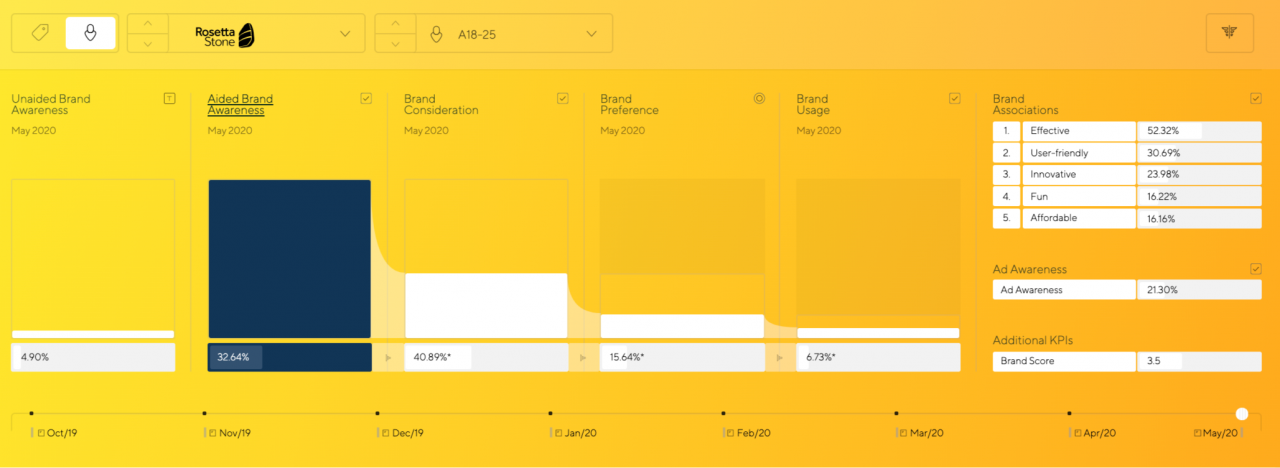
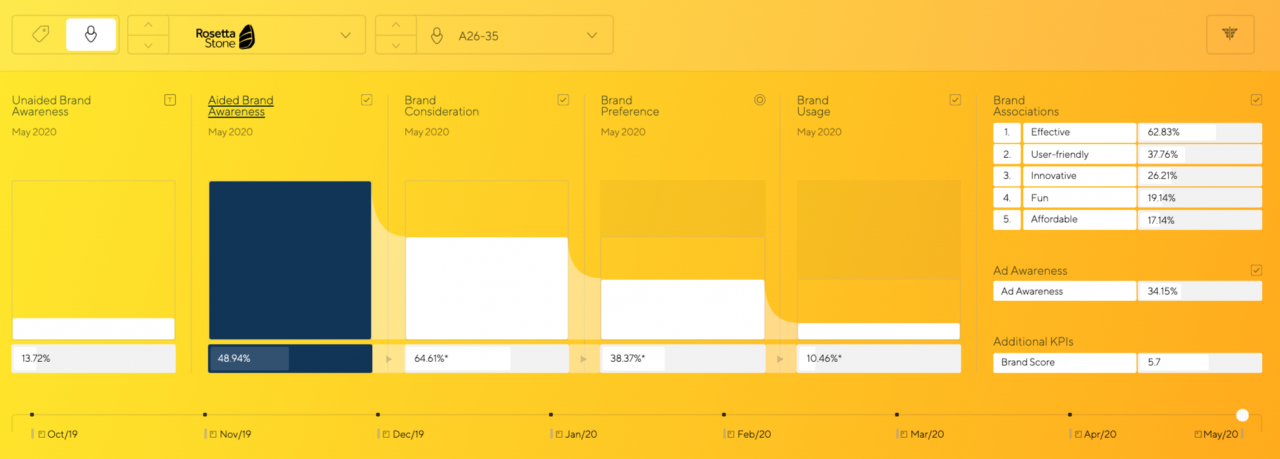
In comparison, Babbel has just a 16% brand awareness result in the 18-25-year-old age category, and 30% with the 26-35-year-olds.
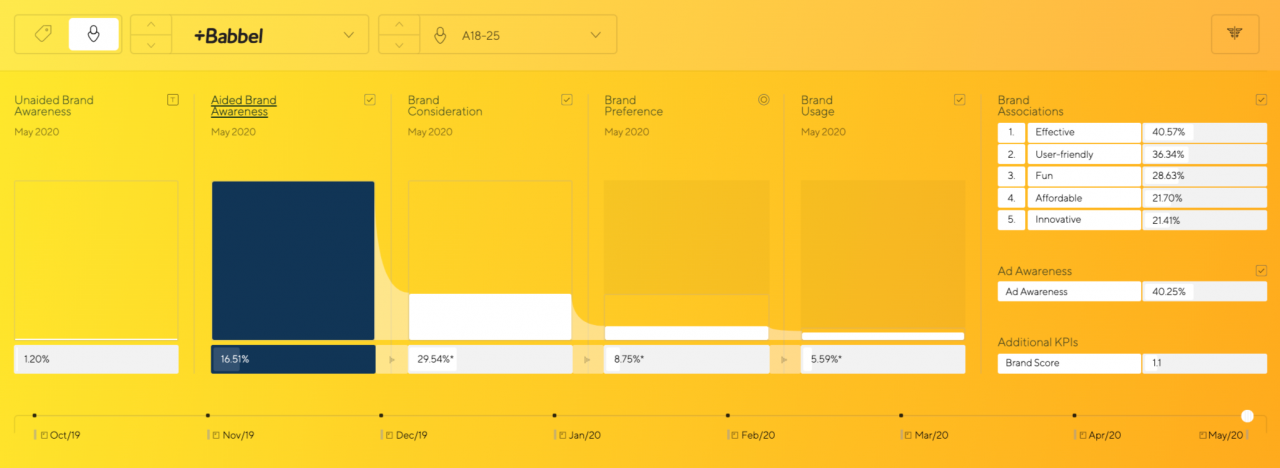
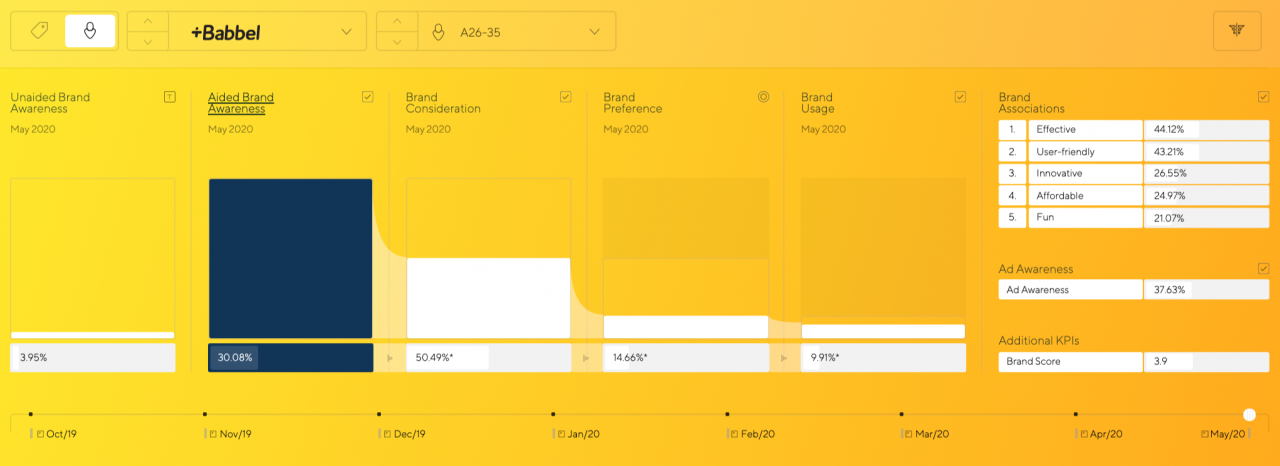
Never presume how your competitors are performing. Access to competitor data on the markets and target audiences that are important to you will be key in shaping your marketing strategy and making decisions that will scale growth.
See the true impact of brand campaigns
The key to getting more budget for your brand marketing campaigns is proving that previous campaigns have had an impact. Therefore, it is important for brand managers to be able to see a significant jump across their main brand KPIs following the launch of a campaign.
Why?
If you want to scale growth for your brand, you need to accurately determine which brand activities worked and which didn’t. This helps in making better marketing decisions in the future and being able to concentrate on what is best for your brand. Let’s have a look at the chart below, that follows Babbel’s brand awareness amongst current language learners from October 2019 to May 2020 and determine what that could mean for them.
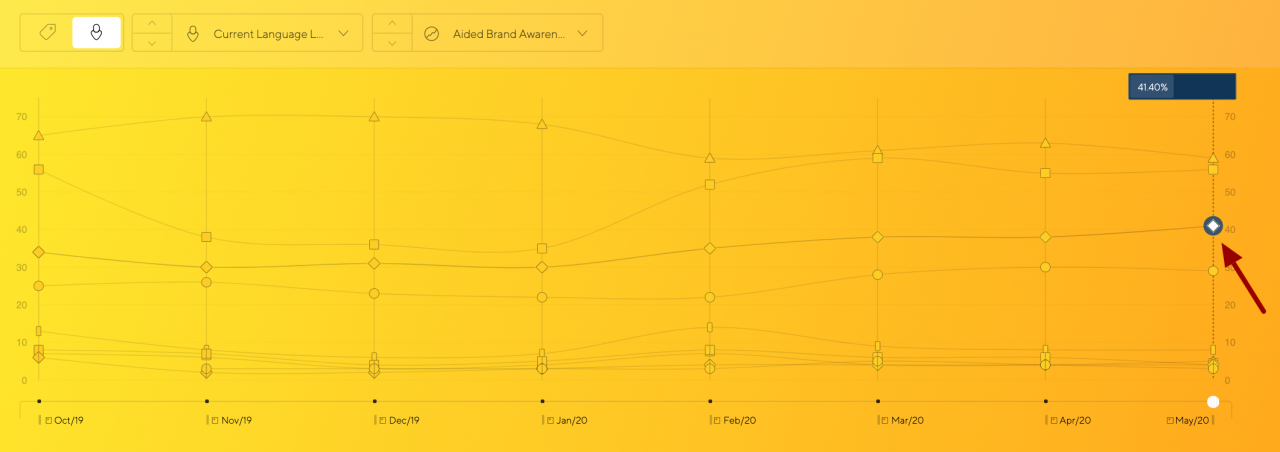
Whatever Babbel has been doing brand-wise in the last 8 months, it has resonated with current language learners, albeit slightly. Luckily for Babbel, they are not one of the brands that have stayed stagnant or experienced a massive drop in the last months, as online learning continues to grow. However, they also haven’t gained the traction that one would assume from reading the media’s coverage of the boom in online learning.
Having a chart and data like the one above can confirm for Babbel that they are on the right track with an important target audience.
Find new audiences
As showcased in the last section, it isn’t always wise for a brand to jump on the bandwagon of a certain audience just because it is working for a competitor or is currently deemed trendy. On the flip side, brands shouldn’t always stick to the same target audience. It can become stale.
It is difficult to make that plunge into the unknown without any supporting data. Brand tracking software can provide that data.
Have a look at the heatmap below. What do you see?
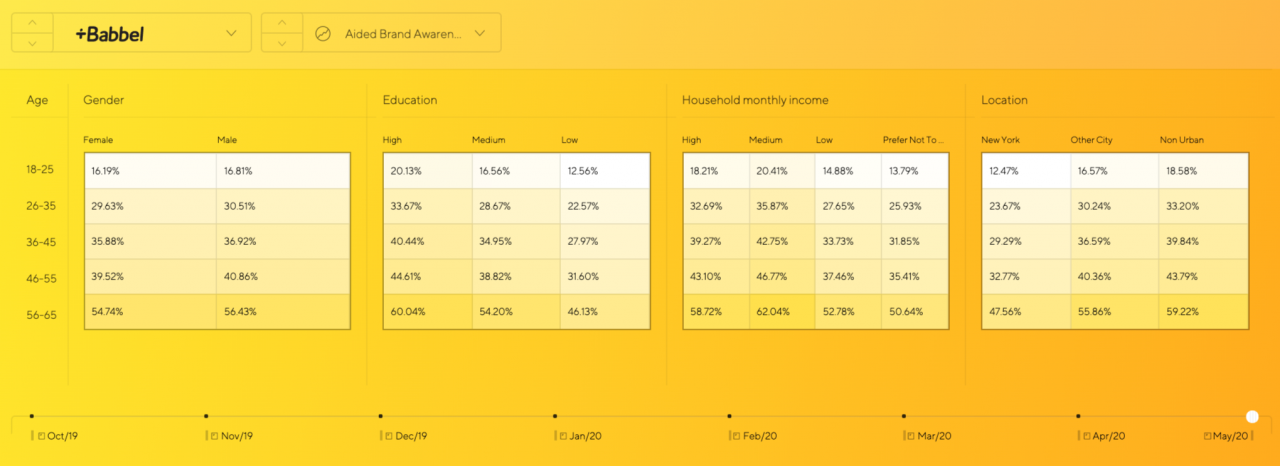
A heatmap can help Babbel see where patterns emerge around specific audience characteristics that increase or decrease over time. By using the heatmap above we were able to see that the biggest trend in brand awareness is around the 56-65-year-old age group. Digging down further, Babbel’s brand awareness hits its peak with 56-65-year-olds with a medium household monthly income (62%). The 56-65-year-olds with a high level of education are not far behind (60%).
The younger the age goes, brand awareness also drops. A cautious marketer decides to stick with the audience(s) performing the best. However, a marketer who really wants to scale growth will look at this heatmap and find potential.
Look at that trend in high education and a medium monthly income. Brand awareness might now fare as high as with the 56-65-year-olds, but there is a chance to bump brand awareness for the 26-55-year-olds by creating campaigns that speak to this faction of their lives.
Or what if Babbel really wanted to work on making itself a contender amongst 18-25-year-olds? From the heatmap, we can see that the best tactic would be by appealing to those within this age group who are highly educated.
There are, of course, many ways in which you can scale your business. However, it is brand tracking that provides vital insights into how the brand is performing. Not only does it show trustworthy and actionable information surrounding campaign impact, but it also provides valuable data on competitor campaigns, audience perception, and potential new avenues for growth. Remember, the best way to scale your business is by tapping into the minds of your customers. Track your brand!
Cover image source: ROMBO
